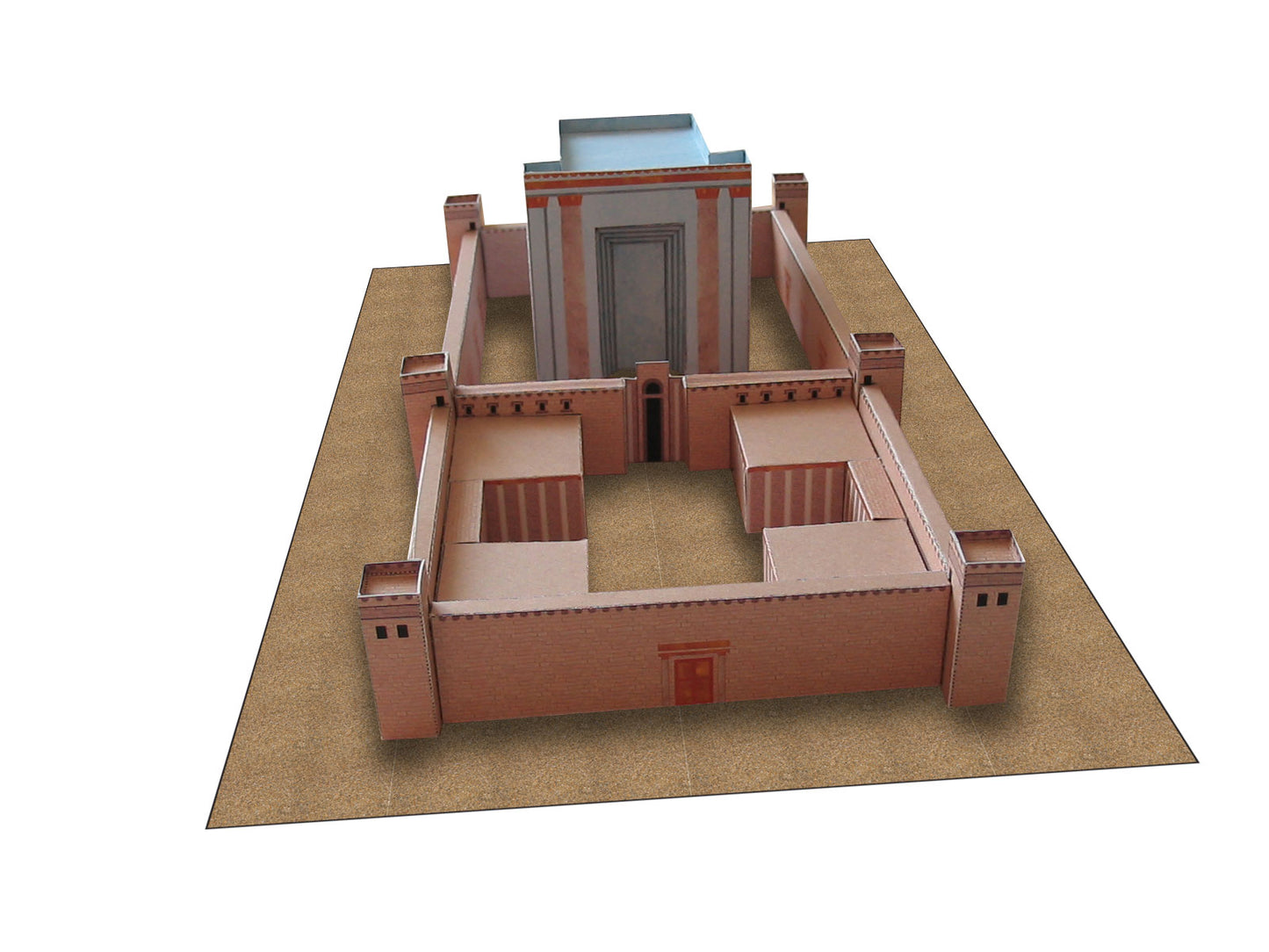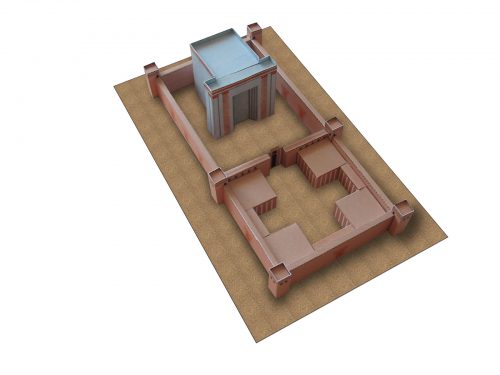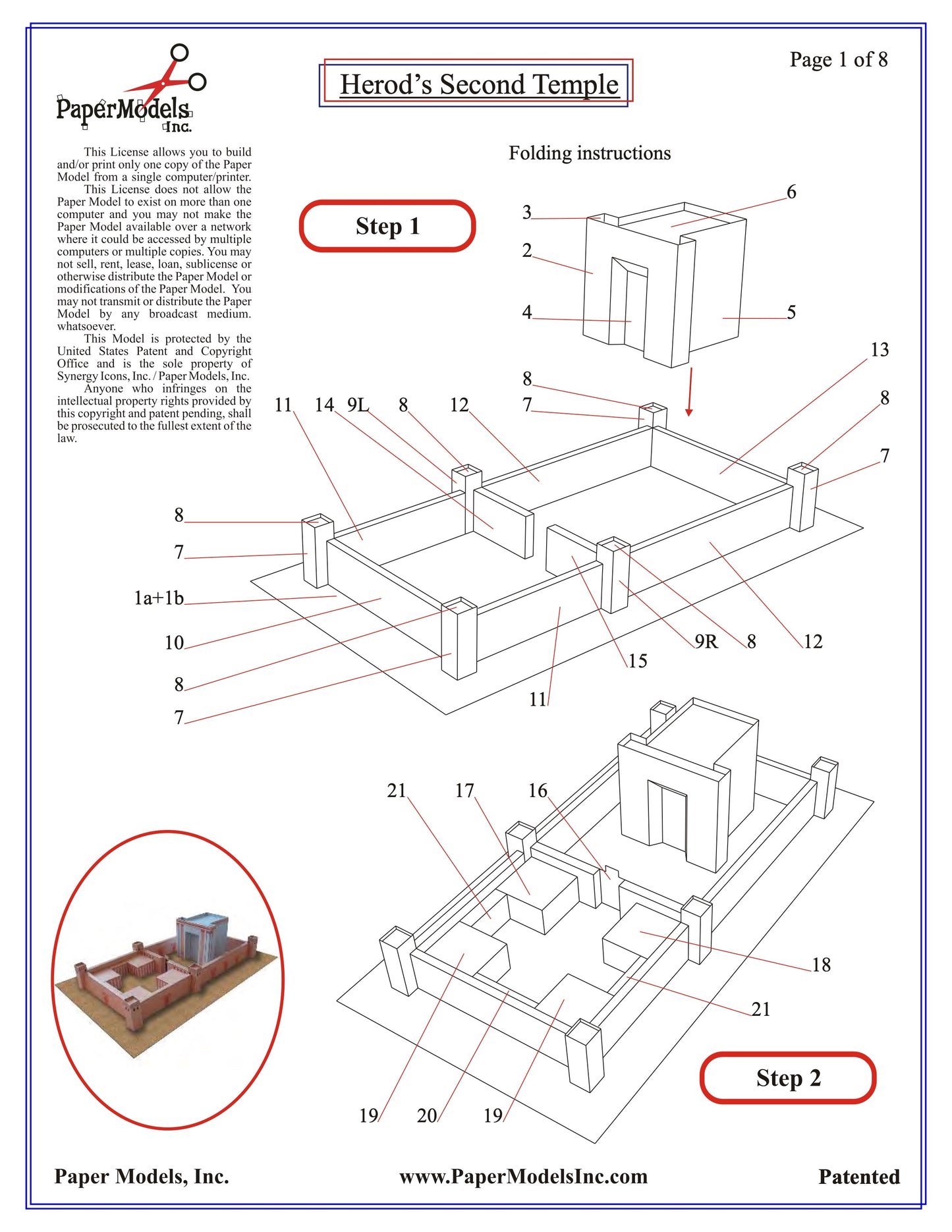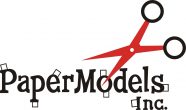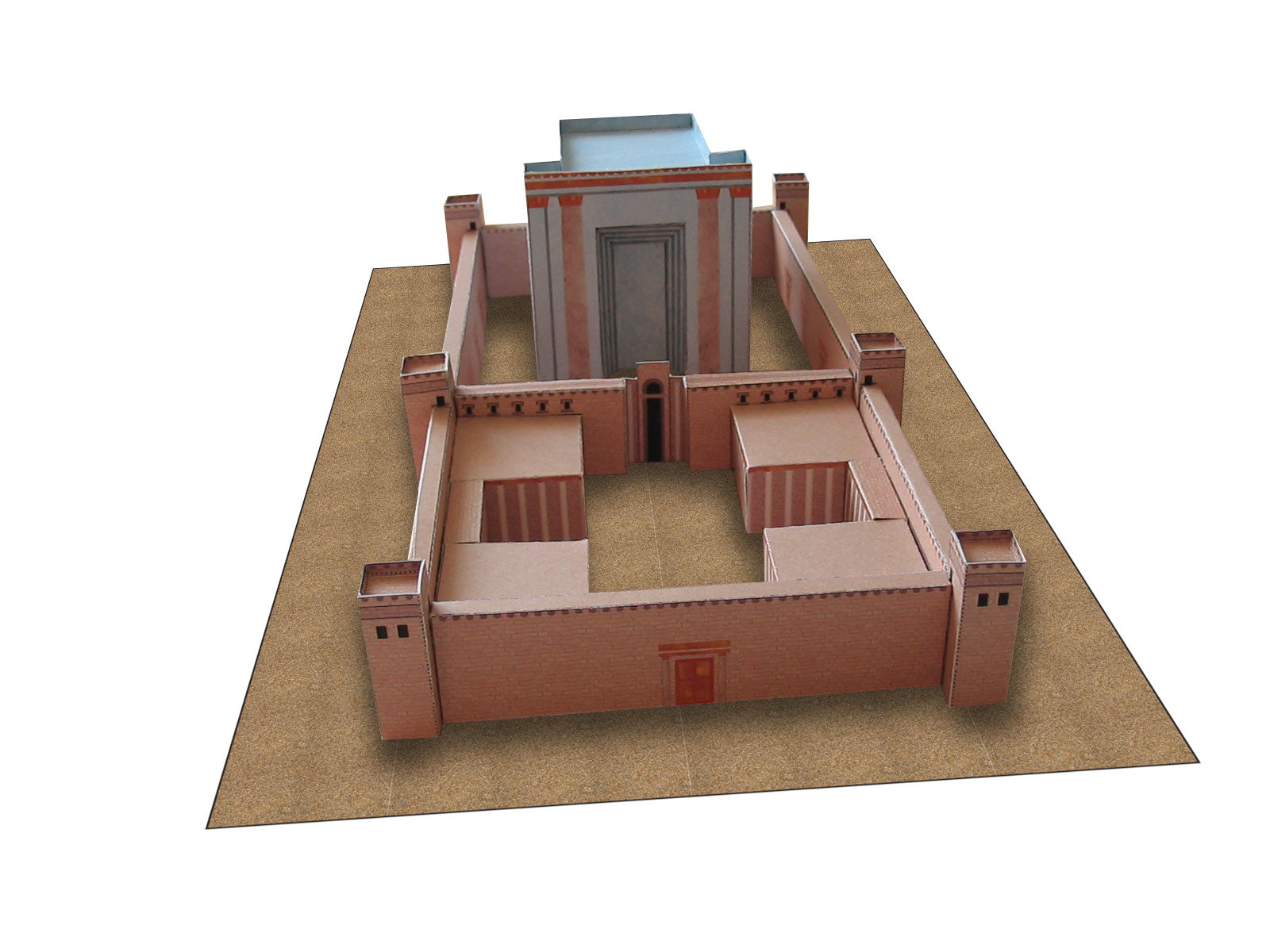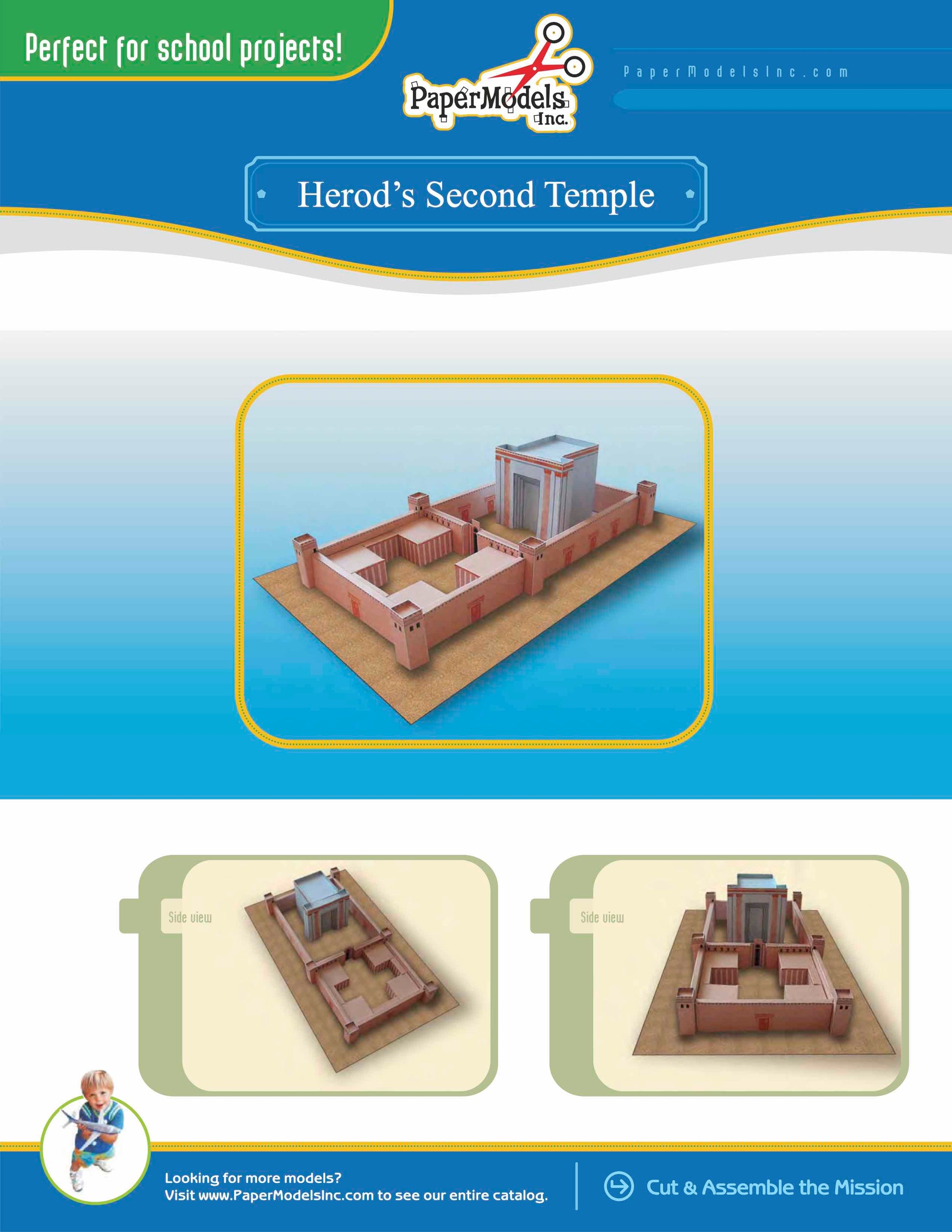Second Temple of Jerusalem - בית־המקדש השני - Paper Model Project Kit
Second Temple of Jerusalem - בית־המקדש השני - Paper Model Project Kit
No se pudo cargar la disponibilidad de retiro
🌟 Welcome to Paper Models Online – Your Shortcut to Academic Excellence! 🌟
Are you tired of stressing over last-minute school projects? Look no further! Paper Models Online is here to make your academic life a breeze.
🚀 Why Choose Us?
At Paper Models Online, we understand the pressure of looming deadlines and the desire for that coveted "A" grade. That's why we've crafted the perfect solution for you! Whether you're a student aiming for extra credit, a parent looking for quality time with your kids, or just someone in need of a break from the chaos, our paper models are your ticket to success!
💻 Instant PDF Download OR Pre-Printed & Shipped
You're in control! Choose from our instant PDF download, starting at just $9.95 for the 7"x10" size or $11.95 for the 10"x13" size.
Print it on your home or office printer using regular paper, or opt for the hassle-free pre-printed option. We'll ship it directly to your doorstep for a flat $5 fee via USPS First-Class Parcel, ensuring you get it in 1-3 days!
✂️ Easy Assembly, Maximum Impact
With just a pair of scissors, some glue, and an hour of your time, you can turn these paper sheets into stunning three-dimensional architectural replicas or complete science projects. The images on our website are real models made from our kits, and we even provide a history to help you craft an impressive report.
🎨 Unleash Your Creativity
Not into mission kits? No worries! Our models double as templates for your creative genius. Paint, trace, adjust sizes—your imagination is the only limit! Create a custom masterpiece that reflects your unique style and personality.
🛒 The Buying Process Made Simple
- Choose Your Size: 7"x10" or 10"x13"
- Choose Your Delivery: Instant PDF download or pre-printed and shipped
- Purchase Your Model: It's that easy!

📦 Typical Kit Sample
Each kit includes 8 to 18 pages, providing everything you need to bring the model to life. An "exploded view" guides you through assembly, and a complimentary history adds that extra touch for your report. Impress your teacher not just with creativity but also with your research skills!
Don't let deadlines stress you out. Choose Paper Models Online for your next school project, and let us be Your Best Way To Get An "A"! 🌟
 |
 |
 |
| Exploded View | Sample Pieces | Finished Model |
Free History For Your Report
Second Temple
The Second Temple was a religious Jewish temple located atop Mount Moriah in Jerusalem from 515 BCE to 70 CE. The history of this Second Temple actually begins several years earlier, with the creation of the First Temple, also known as Solomon’s Temple, built in 10th Century BCE. Both Temples served as the centerpiece of religious ceremonies and sacrifices for Judaism.
The physical location of Mount Moriah plays into the most ancient of Jewish history, as it is claimed that this was the location of the Biblical account of Abraham’s near-sacrifice of his son, Isaac, to the Lord. As the second king of the newly-founded Kingdom of Israel, King David set his sights on conquering the City of Jerusalem for the Israeli kingdom in 1004 BCE. At this point, Jerusalem became the central capital of the Northern Kingdom of Jerusalem, and King David relocated the Ark of the Covenant here.
According to Biblical accounts, the Lord had instructed King David to leave the task of building a temple (a permanent Holy of Hollies from the Jew’s 40 years of wandering in the desert, carrying the Ark with them) to his son and successor, King Solomon. Before his death, however, King David set about arranging and preparing materials for the construction of the Temple, including purchasing a threshing floor and logging in cedar wood from modern-day Lebanon, floating it down the Mediterranean coastline to Joppa (modern-day Tel Aviv-Jaffa) and hauling it to Jerusalem.
The Temple was constructed on the ancient location of Abraham’s near-sacrifice as a tribute to both the Lord and their forefathers. The process of acquiring the materials, and cutting the stone for the temple, took approximately three years; with the assistance of both local kings who held the Jewish God in high regard, and the skilled craftsmanship of Phoenician builders; all under guidance of the Levites, the one of twelve tribes of Israel that were set apart as priests.
Most of the hard labor to build the Temple came not from the Israelites, but from the captured Canons, who were used as slaves. After eleven years, the Temple was completed. Time was spent cutting massive stones and fitting them together along the edges of Mount Moriah to fill an even platform at the top, above which the actual Temple was constructed. Under strict ceremony, King Solomon then moved the Ark from a tent into the Holy of Hollies.
It wasn’t long, however, until the Temple began to be pillaged for both material and religious reasons by kings of surrounding nations. The eighth time the Temple was pillaged was by King Nebuchadnezzar II of Babylon in 586 BCE. This time, he carried out all of the sacred treasures of the Temple and burned it to the ground, leaving no remnants behind. At the time of the attack and burning of the Temple, the Jews were made slaves of the Babylonian empire.
The Jews would receive these treasures back from the Babylonian empire in 538 BCE by Cyrus the Great of the Persian Empire, and were allowed to return to the Kingdom of Israel. It took four mounts for them to travel from the Euphrates River to Jerusalem, and a new sense of religious duty was heavy on their hearts. After 70 years, a new temple needed to be built in a re-organized Jerusalem. The leader Zerubbabel, grandson of the previous King of Judah, was credited for the foundation building of the Second Temple.
This happened after an immediate resurrection of an alter to God on the exact spot on Mount Moriah where the Holy of Hollies once stood; and after years of negotiating financial support, the Temple was reconstructed. The new Kingdom of Judah, however, while accepting financial help, refused labor help on construction of the Second Temple, believing they should build it themselves. Several Biblical prophets, including Haggai and Zechariah, warned local kings to support the building of the Temple and its needed place in Jewish religion and culture.
Finally, on 516, nearly two decades after the Jew’s return from exile, the Second Temple was completed. In the 19 BCE, Herod the Great, the ruler of Jerusalem, undertook Mount Moriah and the Second Temple as one of several massive construction projects. During this time, Herod the Great actually bulldozed the Second Temple and rebuilt it. However, temple rituals actually continued during this time, so Jewish history does not distinguish a “third temple” being built, because there was no pause in activities. However, this third structure is sometimes referred to as Herod’s Temple.
Herod’s renovation also included massive archways supporting the Temple Plaza, which today is known as Temple Mount in Judeo-Christian history and as Noble Sanctuary in Islamic history. The area became one giant flat structure, with only a piece of rock formation sticking out at the top of Mount Moriah, which is where the sacrificial Holy of Hollies was said to be located. Much of this original flat structure still remains, and is included in the Western Wall.
Nearly 40 years later in 66 BCE, the Jewish people, tired of being under Roman rule, rebelled and wanted to claim Jerusalem for themselves once again to re-establish the Kingdom of Israel. The Roman forces under Titus conquered the Jewish people and destroyed many portions of Jerusalem, including the Temple. The Temple Mount and Western Wall, however, are portions that remained intact.
Since this destruction, the Jewish people have desired to rebuild the temple, a Third Temple, and efforts remain to push forth with this effort today. The Temple Mount area fell out of control of Jewish hands after Titus’ victory, and was not returned until the State of Israel conquered Jerusalem and the Temple Mount in the Six Day War of 1967. However, many things have changed since the victory of Titus. Since 687, the exact location of the Second Temple has been the site of one of the Islamic faith’s most sacred shrines, Dome of the Rock.
The structure was built upon Mount Moriah to commemorate the spot (the protruding rock portion of Mount Moriah, once the site of the alter of the Temples), where Muslim tradition believes that the Prophet Muhammed ascended to heaven. Also built on the Mount is the Al-Aqsa Mosque, a center of worship for Muslims. Even as the Jewish State of Israel now owns the land occupied by these buildings they are unable to build the Third Temple, as international obligations require Israel to retain Temple Mount as the Holy Islamic Site Al-Haram al-Qudsi al-Sharif (Noble Sanctuary).
Currently the capitol city of Israel, Palestine and most Muslim countries view the State of Israel and Jerusalem as occupied territory, and claim that the Noble Sanctuary will be the centerpiece of the future State of Palestine. Today, Orthodox Jews are prohibited via religious law from entering Temple Mount, but many visitors can wander Noble Sanctuary and walk up to (but not into) Dome of the Rock on most days via an elevated walkway through the Mugrabi Gate.
© Copyright – Paper Models, Inc. – All Rights Reserved
Share
